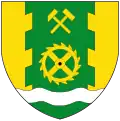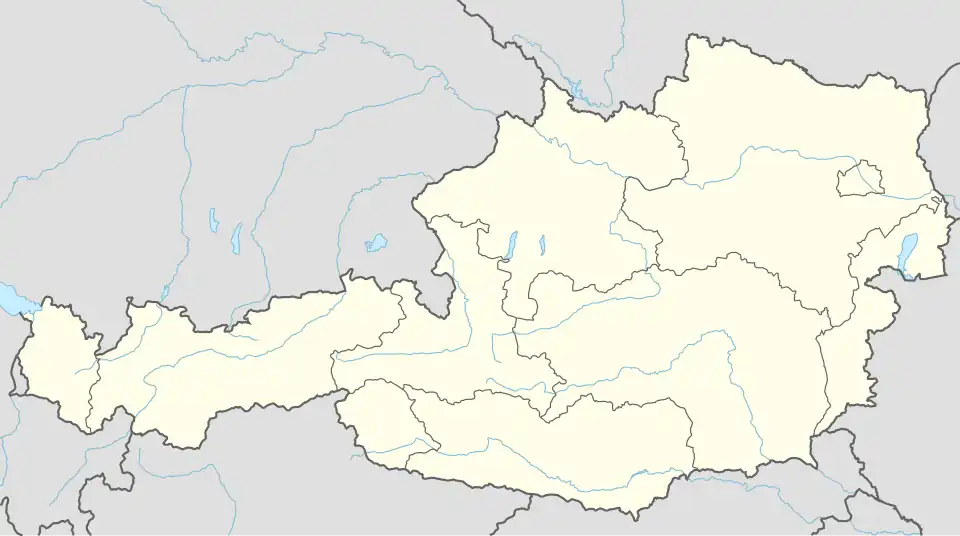Trattenbach
Trattenbach | |
|---|---|
Trattenbach parish church | |
 Coat of arms | |
 Trattenbach Location within Austria | |
| Coordinates: 47°36′00″N 15°52′00″E / 47.60000°N 15.86667°E | |
| Country | Austria |
| State | Lower Austria |
| District | Neunkirchen |
| Government | |
| • Mayor | Ernst Schabauer (ÖVP) |
| Area | |
• Total | 30.91 km2 (11.93 sq mi) |
| Elevation | 777 m (2,549 ft) |
| Population (2018-01-01)[2] | |
• Total | 545 |
| • Density | 18/km2 (46/sq mi) |
| Time zone | UTC+1 (CET) |
| • Summer (DST) | UTC+2 (CEST) |
| Postal code | 2881 |
| Area code | 02641 |
| Vehicle registration | NK |
| Website | www.tiscover.com/trattenbach |
Trattenbach is a village in Austria, situated in Lower Austria. It is in the industrial part (Industrieviertel) of Lower Austria. The village's total area is 30.91 km2 (11.93 sq mi), of which 81.31% is forested.
From 1920 to 1922, the philosopher Ludwig Wittgenstein was an elementary teacher at the school in Trattenbach.[3]
Population
| Year | Pop. | ±% |
|---|---|---|
| 1971 | 716 | — |
| 1981 | 647 | −9.6% |
| 1991 | 718 | +11.0% |
| 2001 | 616 | −14.2% |
| 2012 | 538 | −12.7% |
| 2013 | 543 | +0.9% |
Economy
There are 25 companies, 19 in 1991. 269 people are employed. The activity rate in 2001 was 44.96%. Historically Trattenbach was famous for its scythe and knife production, which did get exported worldwide.
References
- ^ "Dauersiedlungsraum der Gemeinden Politischen Bezirke und Bundesländer - Gebietsstand 1.1.2018". Statistics Austria. Retrieved 10 March 2019.
- ^ "Einwohnerzahl 1.1.2018 nach Gemeinden mit Status, Gebietsstand 1.1.2018". Statistics Austria. Retrieved 9 March 2019.
- ^ "Trattenbach 1920-1922". Österreichische Ludwig Wittgenstein Gesellschaft.